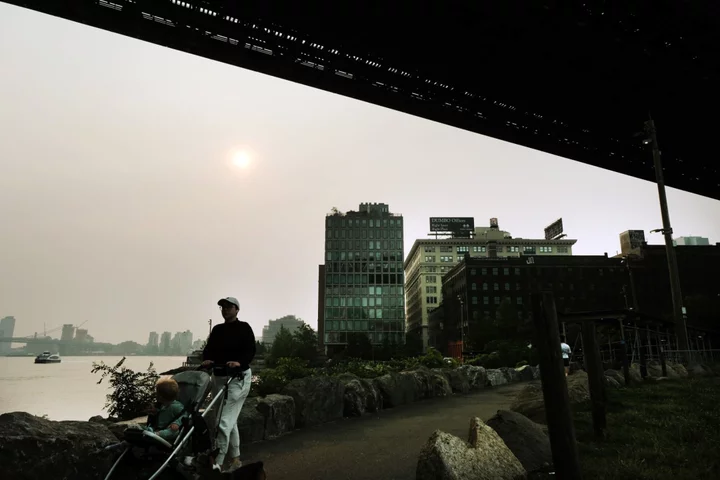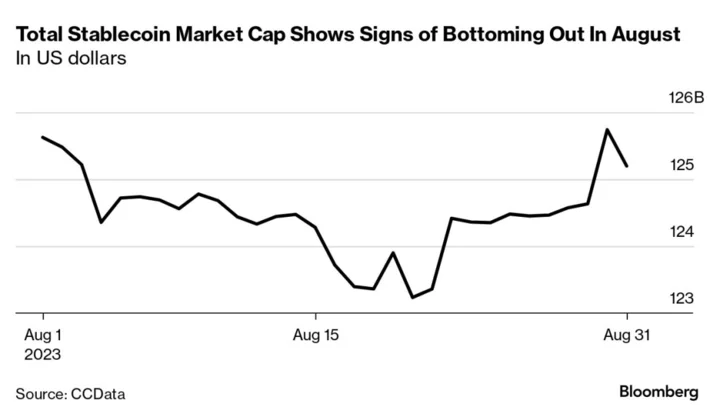The heat that has set records across Texas and Mexico will be spreading across the central and southern US in coming days, pushing extremes as far north as Illinois.
With hot air trapped under a giant blob of high pressure that has been stuck in the atmosphere for about two weeks, the phenomenon is what’s often called a heat dome. Some meteorologists have called these “domes of doom” for their impact on energy and agriculture markets.
The scorching heat has brought electric grids in both Texas and Mexico to the brink, causing power outages and forcing utilities to call for conservation. On Monday afternoon, electricity demand in Texas set a new record. The strain highlights how global warming stresses infrastructure that was built for the climate of another age.
Scientists who study the effect of climate change on extreme heat say that greenhouse gas emissions make all heat waves more intense. In 2021, shortly after the Pacific Northwest experienced record-breaking high temperatures, researchers concluded that human-caused warming made that heat dome at least 150 times more likely.
The mechanics of how this dome formed are fairly straightforward, however, said Paul Pastelok, senior meteorologist at commercial forecaster AccuWeather Inc.
It starts with the ground drying out and the sun’s heat baking the air, causing it to rise, said Pastelok. So much air rises that “there is no more room to fit any more air up there,” and that just sears the heat back down to the surface.
The large heat dome has been held in place by a kink in the jet stream caused by an oceanic heat wave in the North Pacific, said Jennifer Francis, a climate scientist at the Woodwell Climate Research Center in Massachusetts. “The hot blob tends to create a northward swing in the jet stream in its vicinity, which causes a southward dip downstream of it over the Western states,’’ she said.
The entire thing looks like a giant W in the atmosphere. The upward peak in the middle is where the high pressure has built over Texas and Mexico, leaving the bubble of heat pinned over central North America.
Read More: Blackouts Loom for Most of US in Extreme Summer-Heat Scenario
In past years, Texas heat has sometimes expanded north, spreading out its intensity across the Great Plains, but this year something else has happened, Pastelok said. Another high-pressure system — formed to the north in Canada — together with the dome in Texas trapped the jet stream in place and prevented the southern heat from drifting northward.
Such heat in June has been anomalous. High temperatures in Houston have reached 90F or above every day since June 7, according to the National Weather Service. But the reading on the thermometer is just half the equation when humidity is thrown in. The heat index — how hot it feels — has risen above 101 since June 10 to Monday, said Janice Maldonado, a weather service meteorologist in Dickinson, Texas. On June 21 the index reached a high of 114, she said.
On top of that, overnight temperatures have stayed high, bringing little relief and adding to stress on the grid. Maldonado said Houston Hobby Airport has set or tied seven records for warm low temperatures.
There could be a little respite coming to Texas as the heat shifts into the central Mississippi River Valley later this week, said Bryan Jackson, a forecaster with the US Weather Prediction Center. Texas temperatures will be closer to what is normal for July, which is still very hot.
“It is not relief, but it is relief from the very extreme heat they have been seeing,” Jackson said.
After this dilution of the heat across the South and central US states, Pastelok said it’s likely the dome will rebuild — and then Texas probably won’t get much relief for the rest of summer.
“The second time around, I think it is there for a while,” he said.
--With assistance from Eric Roston and Naureen S Malik.









